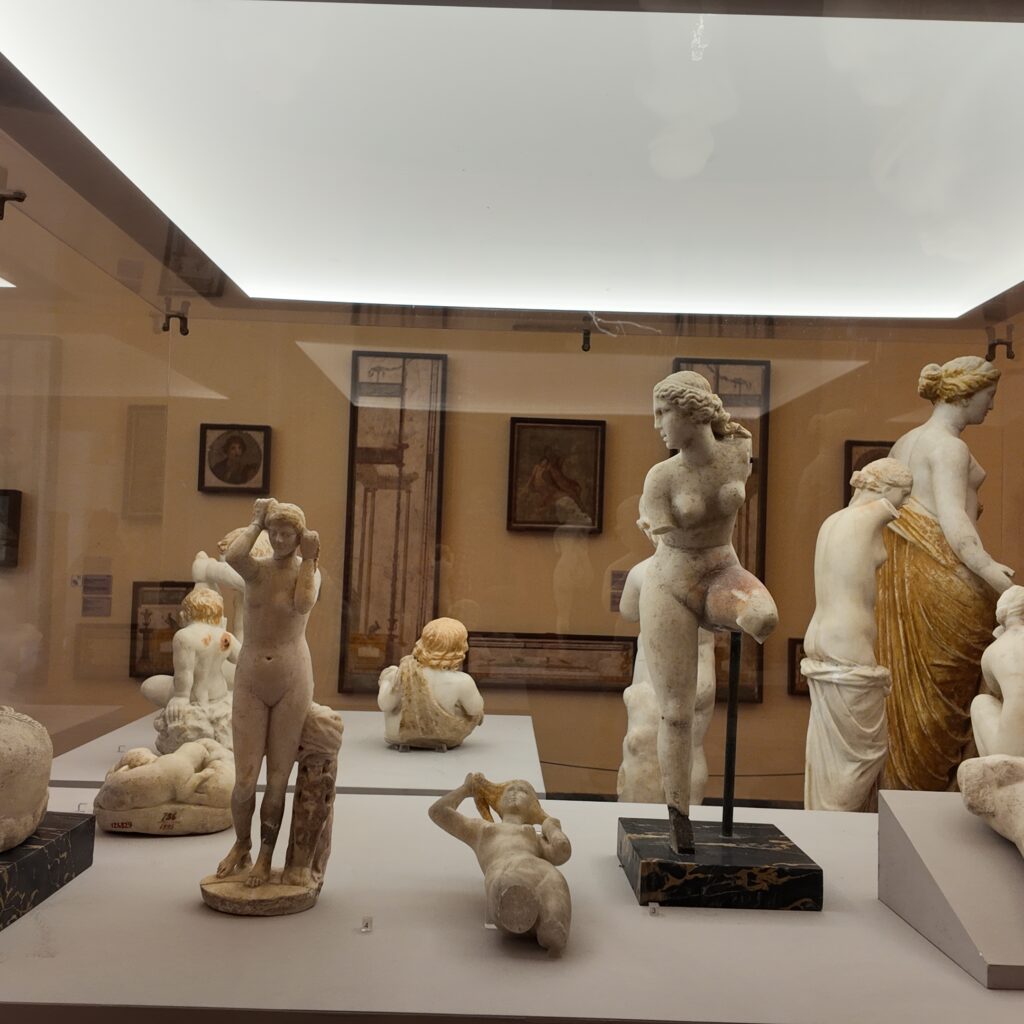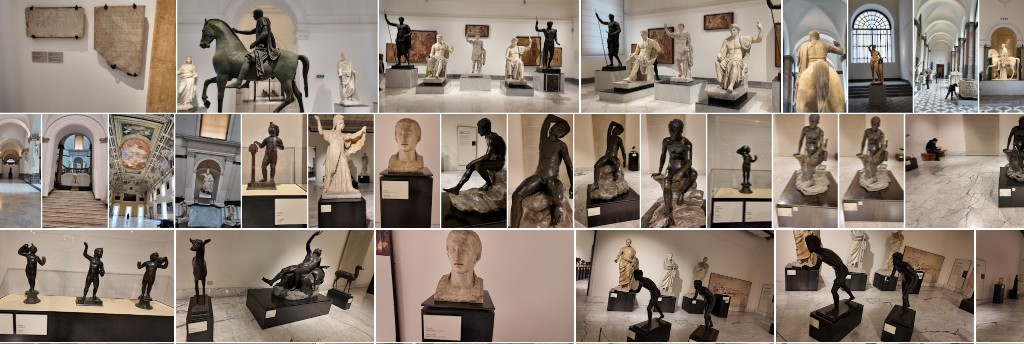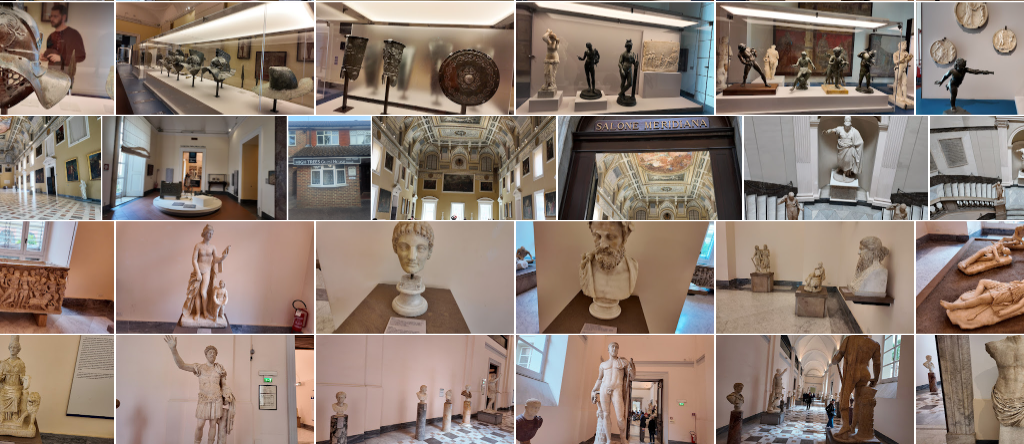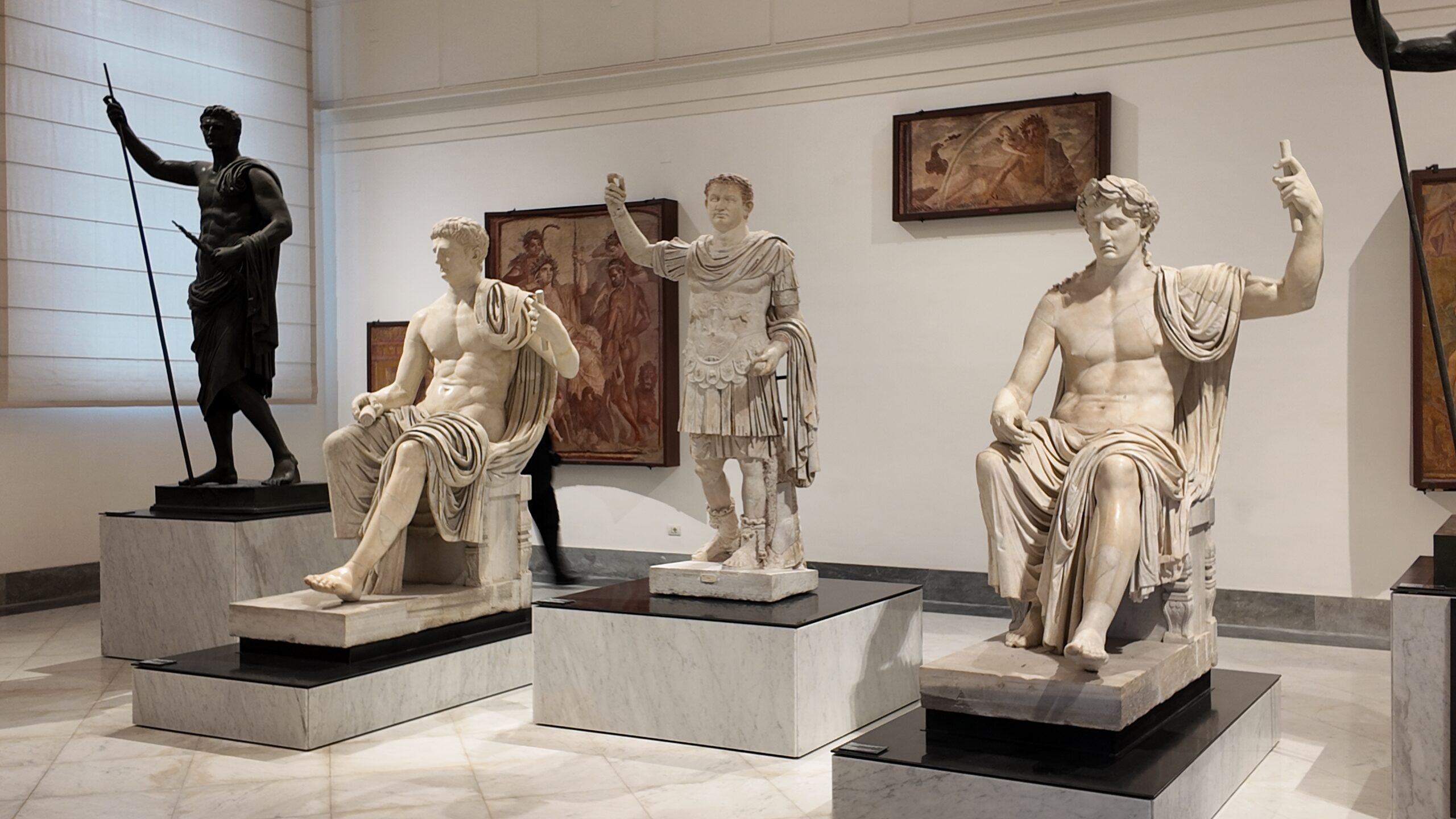Look for the cost, accommodation, and how to get there cheap at the bottom of this blog!
I am the first to admit that I knew very little about the history of Greece and Italy until my visit in the spring of 2025. Due to rain, I did not make it to the actual city, so this post will be dedicated to the Pompeii Museum in Naples, Italy.
From Wikipedia, the free encyclopedia. This article is about the ancient city of Pompei. For the Classical Roman leader, see Pompey. For the Roman family, see Pompeia gens. For the Pacific Island, see Pohnpei.
Largely preserved under the ash, Pompeii offers a unique snapshot of Roman life, frozen at the moment it was buried, as well as insight into ancient urban planning. It was a wealthy town of 10,000 to 20,000 residents at the time it was destroyed. It hosted many fine public buildings and luxurious private houses with lavish decorations, furnishings and artworks, which were the main attractions for early excavators; subsequent excavations have found hundreds of private homes and businesses reflecting various architectural styles and social classes, as well as numerous public buildings. Organic remains, including wooden objects and human bodies, were interred in the ash; their eventual decay allowed archaeologists to create Moulds of figures in their final moments of life. The numerous graffiti carved on outside walls and inside rooms provide a wealth of examples of the largely lost Vulgar Latin spoken colloquially at the time, contrasting with the formal language of classical writers.
Following its destruction, Pompeii remained largely undisturbed until its rediscovery in the late 16th century. Major excavations did not begin until the mid-18th century, which marked the emergence of modern archeology; initial efforts to unearth the city were haphazard or marred by looting, resulting in many items or sites being damaged or destroyed. By 1960, most of Pompeii had been uncovered but left in decay; further major excavations were banned or limited to targeted, prioritized areas. Since 2018, these efforts have led to new discoveries in some previously unexplored areas of the city.
Pompeii is a UNESCO World Heritage Site, owing to its status as “the only archaeological site in the world that provides a complete picture of an ancient Roman city.
It is among the most popular tourist attractions in Italy, with approximately 2.5 million visitors annually.

Pompeii was destroyed by the eruption of Mount Vesuvius on August 24, 79 CE. The volcanic debris covered the city, burying it beneath a blanket of ash and pumice.
Following its destruction, Pompeii remained largely undisturbed until its rediscovery in the late 16th century. Major excavations did not begin until the mid-18th century, which marked the emergence of modern archeology;[5] initial efforts to unearth the city were haphazard or marred by looting, resulting in many items or sites being damaged or destroyed.[6] By 1960, most of Pompeii had been uncovered but left in decay;[7] further major excavations were banned or limited to targeted, prioritized areas.
Since 2018, these efforts have led to discoveries in some previously unexplored areas of the city.
Less than ten years ago, which is what made this museum so fascinating to me. Here is the entrance:
I must have taken over a hundred pictures and videos, as everywhere you looked was incredible.
Here are some favorite pictures, a nd you can find all of the pictures here:



One of the most incredible things about Pompeii is that they are still discovering new things as they continue to roll back time, excavating the site.
The ruins at Pompeii were first discovered late in the 16th century by the architect Domenico Fontana. Herculaneum was discovered in 1709, and systematic excavation began there in 1738. Work did not begin at Pompeii until 1748, and in 176,3 an inscription (“Rei publicae Pompeianorum”) was found that identified the site as Pompeii. The work at these towns in the mid-18th century marked the start of the modern science of archaeology.
Here is a recent article I found that explains they are still discovering ruins:
Archaeologists make a breakthrough as life-size sculptures are discovered in a Pompeii tomb
Archaeologists make a breakthrough as life-size sculptures are discovered in a Pompeii tomb
Visitors to the site of Pompeii, the ancient Roman town buried (and so preserved for thousands of years) by the eruption of Mount Vesuvius in 79 AD, don’t often think to look beyond the city walls. And it’s easy to understand why: there’s plenty on offer within this monumentally well-preserved town, from jewel-like wall paintings of myths and legends like Helen of Troy, to the majestic amphitheatre and sumptuously stuccoed baths.
But step outside the gates for a moment, and you’re in a very different – yet no less important – world.
For the ancient Romans, the roads and paths leading into and out of cities were crucial: not just for getting places, but as a very real kind of “memory lane”. Tombs lined these ancient byways – some simply bearing inscriptions to the memories of loved ones lost, others, more grand, accommodating space for friends and family to feast in remembrance of the dead.
Some of the tombs even address the passerby directly, as if their occupant could speak again, and pass on what they’ve learned. Take one Pompeian example, set up by the freedman Publius Vesonius Phileros, which opens with ineffable politeness: “Stranger, wait a while if it’s no trouble, and learn what not to do.”
Going into Pompeii, and leaving it, was about being reminded of ways of living and ways of dying – as well as an invitation to tip your hat to those who trod the path before you, and to learn from their example.
During my travels, I try to balance the cheap, thrifty and going for it while trying to remain on budget. It normally makes me feel like I missed out when leaving a new City/Country.
Rain or Shine, I will visit Pompeii as I missed out. I will share some sweet dance moves too! 🕺
How to get to Italy, cheap: I recommend flying Norse Airlines from Los Angeles to Rome for $220. You can get to Los Angeles cheaply from anywhere in Canada and the United States using Google Travel. Consider staying in LA a day or two, doubling up your vacation, and save a ton of money. It is a quick ~$13 train ride from Rome to Naples. Keep in mind that the high-speed train can be very expensive, so check out the milk run to see the countryside.
Where I stayed: Hopestel Secret Garden It was a great hostel in a historic building in the city center. I paid $28 euro / $30 USD a night which is spectacular for Naples City center. There are also studio rooms that can be rented for about $125 which is also a steal in the area.
The best local beer and meal: PIZZA! It was a no-brainer since Napoli is where pizza was invented. I tried several different variations and washed it down with a local Ichnusa unfiltered brewski, which hit the spot every time.
Would I return? 100% YES! I missed the most important historical area due to rain, Pompeii.

